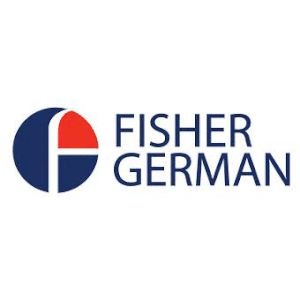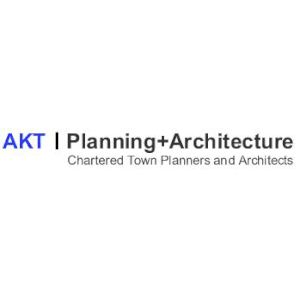Sustainable Drainage System Design


Sustainable Drainage System Design
Benefits of choosing us
We cover a range of applications, including residential, commercial, and industrial projects. Our SuDS design consultants take a collaborative approach, working closely with clients to ensure that the design meets their goals. Our designers have the expertise to provide a comprehensive range of SuDS services, from concept design to detailed drawings.

Our Clients






Sustainable Drainage Design
Our SuDS Designs
Benefits of choosing our design consultancy
Expertise
Our team is highly skilled and knowledgeable in the area of Drainage Design. To provide the best possible results, we are up to date with the latest technology and comply with all SuDS drainage regulations set out by local councils and water companies. This design is completed after the drainage strategies have been approved.
Sustainability
Efficiency
Fixed Price
Sustainable Drainage System Design Methodology
Obtain project details
Consult Authorities
Scope Investigation
Create a SuDS Design
Frequently Asked Questions
SuDS can manage rainwater and runoff in an environmentally sustainable way. It aims to mimic the natural water cycle by reducing the runoff that enters drainage systems, reducing the risk of flooding, improving water quality, and creating green spaces and wildlife habitats. It can include rain gardens, swales, permeable paving, green roofs, and other low-impact development techniques.
The SuDS Manual (C753) produced by CIRIA in 2015 lays out the clear SuDS design principles that balance the need for flood control, water quality, and recreational opportunities. It suggests considering various options for designing storm events, including "Sewers for Adoption" recommendations for determining flood return periods. This period should be chosen with a risk-based approach and considering the impacts of climate change and predicted rainfall.
The SuDS Manual (C753) also delves into the nitty-gritty details of hydraulic design, covering topics such as runoff, conveyance design, storage design, infiltration design, and hydraulic modelling. The manual guides managing drainage during times of excess, as outlined in Section 2.6. For a deeper understanding, you can refer to the publication "Designing for Exceedance in Urban Drainage-Good Practice" (C635) by Balmforth et al. 2006.
According to the Flood and Water Management Act of 2010, the local authority SuDS Advisory Board is required to monitor and regulate the design, specifications, execution, and maintenance of SuDS schemes. Managing SuDS is not just the duty of the advisory boards but also of developers, builders, and even homeowners.
The use of SuDS design can bring many benefits, including:
Reduced flooding
It can help protect you from flooding by saving rainwater in detention ponds and slowing the flow of water away to drainage systems. This reduces your risk of surface water flooding.
Improved water quality
With the help of filtration technology, it is possible to improve water quality by removing pollutants and sediment from runoff that can pollute local waterways.
Enhanced green spaces
By incorporating features such as rain gardens, green roofs, and parks into their designs, SuDS provide an innovative way to increase biodiversity, reduce air pollution and improve quality of life.
Climate adaptation
It can help to reduce the impacts of extreme weather events, such as heavy rainfall, by slowing and storing rainwater. It can also help reduce drought's effects by increasing water availability in dry periods.
Energy savings
It offers an energy-saving alternative to conventional drainage systems, reducing the need for large-scale pumping and treatment facilities.
Increased property values
It can improve the aesthetic appeal of an area and increase property values, which can benefit both property owners and the local economy.
Public engagement
It can engage local communities and encourage public participation, raising awareness of the importance of sustainable water management and improving residents' quality of life.
Overall, using SuDS design can bring many benefits that can help improve the quality of life, the environment, and the economy. It is an effective approach to sustainably managing water.
- SuDS provide powerful environmental protection, cleaning up runoff and preserving aquatic ecosystems. Filtering contaminants and sediments from runoff help to protect water quality and ensure healthy environments remain intact. It also reduce flash flooding of the foul water drainage.
- SuDS have the amazing potential to increase soil infiltration, aiding in recharging groundwater supplies and diminishing the risk of runoff flowing into local waterways.
- Its features like constructed wetlands offer an accessible, natural solution to water treatment, removing pollutants and improving water quality.
- It effectively reduces runoff entering local water systems, which helps maintain a healthy aquatic ecosystem. By slowing the rate of rainwater collection into drainage paths, SuDs provide purification for downstream waters and promote a healthy environment for all its inhabitants!
Overall, SuDS can help improve water quality by reducing the effect of runoff, filtering out contaminants, and encouraging natural water cycles and procedures, making it a practical way to achieve sustainable water management.
Sustainable Drainage System (SuDS) can improve air quality in several ways:
SuDS can incorporate green spaces into the ecosystem, which is a great way to cleanse the air of pollutants. Parks, green roofs, and rain gardens each offer unique benefits when it comes to filtering out dangerous particulate matter and nitrogen oxides from our atmosphere—promoting cleaner, healthier living conditions for us all!
Urban areas are often subject to unpleasant temperatures due to the 'heat island effect' caused by hard surfaces retaining heat. Fortunately, SuDS can work as a remedy, providing shade and reducing air temperature while improving overall air quality in cities.
SuDS offer a variety of benefits, including needing less energy-intensive pumping and treatment facilities. In addition, it can also reduce traffic caused by construction and maintenance associated with conventional draining methods.
Overall, SuDS provide a range of sustainable water management benefits, contributing to an improved local environment through reduced urban heat islands and air pollutants and lessening pressure on large-scale pumping infrastructure.
While SuDS can bring many benefits, challenges, and problems can also arise with their implementation. Some of the common issues with SuDS include:
Maintenance
SuDS require regular maintenance and cleaning to stay in peak condition. This can be costly for local authorities or property owners without the right support. Althought maintenance of SuDS is to become mandatory in the near future with the introduction of SAB in England.
Design
It can be complex to design, particularly in densely populated areas or areas with limited space.
Education and Awareness
It can improve our environment in a big way, but many people still need to gain knowledge of its benefits and responsibilities.
Planning
The implementation of SuDS can require coordination with multiple stakeholders, including local authorities, property owners, and developers, which can make the planning process more complex.
Regulations
When creating SuDS, rules and regulations must be considered - a potential challenge when planning your project.
Despite these challenges, SuDS can bring many benefits, including improved water quality, reduced flood risk, and enhanced green spaces and wildlife habitats. It is important to work to overcome the challenges to ensure that SuDS are implemented effectively.
UKWIR has published the following study about retrofitting SuDS. The cost-benefit analysis of implementing SUDS shows that the system can be retrofitted to remove surface water from the combined sewage system.
If you're looking to retrofit SuDS, here's a quick design guide:
Examine the sewage network to determine the sites of CSO floods and pumping stations.
Map out locations with a history of flooding and spills to identify areas of concern.
Identify separate and combined sewer areas.
Find the locations where existing surface water sewers discharge back into the combined sewer.
Evaluate the potential impact of removing surface water upstream on the performance of the sewer network.
Consider areas where a SuDS retrofit might be feasible.
Choose the appropriate SuDS method to meet your needs.
Based on the UK guidelines and regulations, the minimum depths for SuDs pipe are:
- Minimum 0.35m for domestic gardens and walkways
- Minimum 0.50m for domestic driveways with light vehicle access (less than 7.5 tonnes)
- Minimum 0.9m for driveways, parking, and narrow roads with heavy vehicle access (more than 7.5 tonnes)
- Minimum 0.9m for agricultural land and public spaces
- Minimum 1.2m for highways and unrestricted vehicle parking areas
Piped systems focus mainly on "conveyance" and lack storage capacity.
SuDS needs to fulfil more requirements for water management, including:
Controlling flooding during moderate rainfall
Preventing pollution
Handling extreme events
Meeting the demands of the Water Framework Directive, the Pitt Review, and the EC Floods Directive
- The SuDS components offer larger storage volumes, indicating that these systems will only get overloaded by events happening over a longer period of time, resulting in a lower-impact failure.
- It maintains and attenuates runoff for longer than pipe systems that quickly transfer all downstream flow.
- Managing exceedance is the management of flows between the main system (above ground) and the minor system (below ground) during an extreme event (below ground, i.e., drainage system).
- Generally, the management choices for exceeding limits will be above ground. This requires the control of excess flows during extreme events through the design of above-ground components to decrease property flooding by providing flow paths. This may be accomplished by constructing highways, raising curbs, and establishing sacrificial areas to store overflows.
SuDS are more simply designed to regulate exceedance flows than piped drainage because typical drainage systems are minor.

